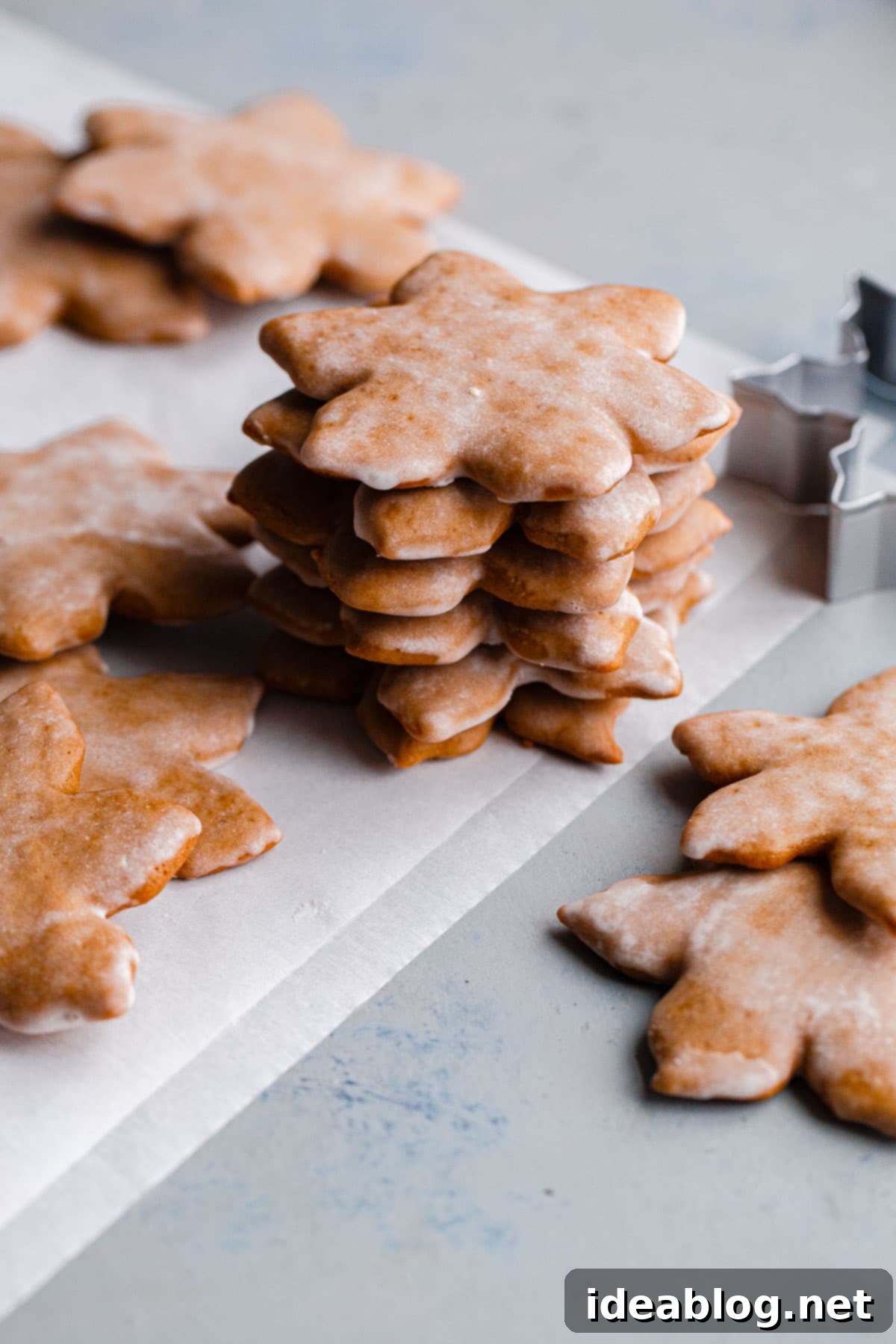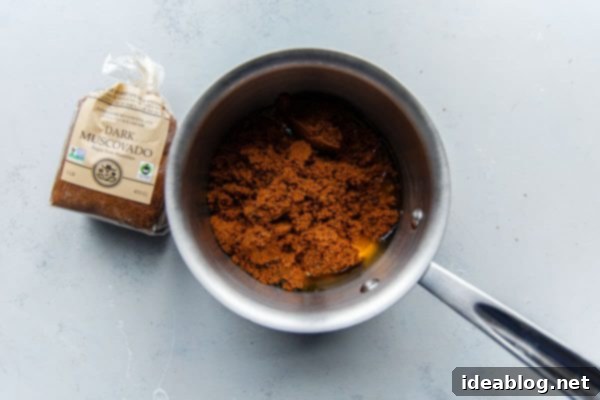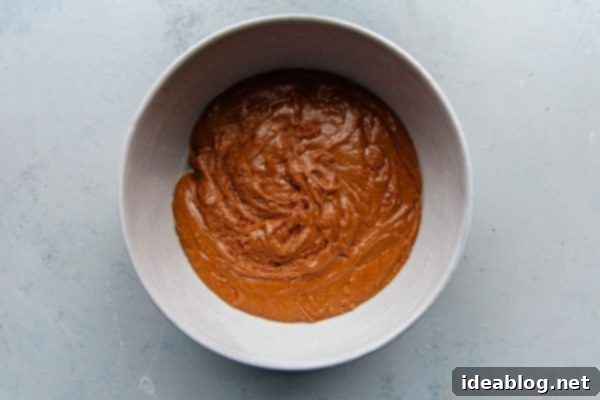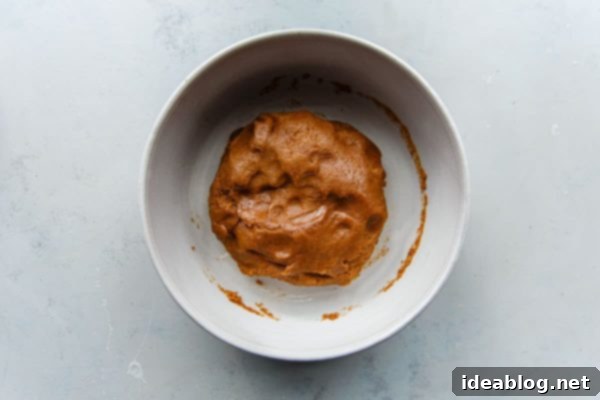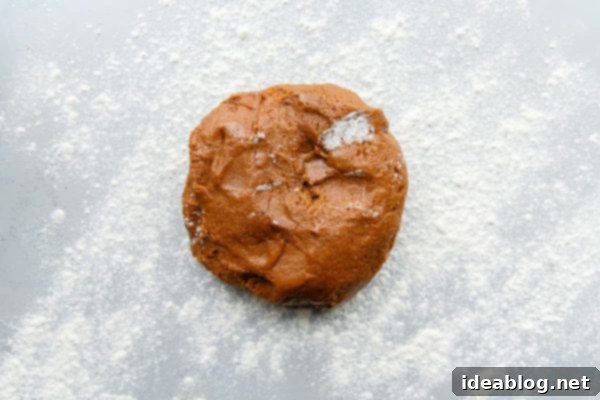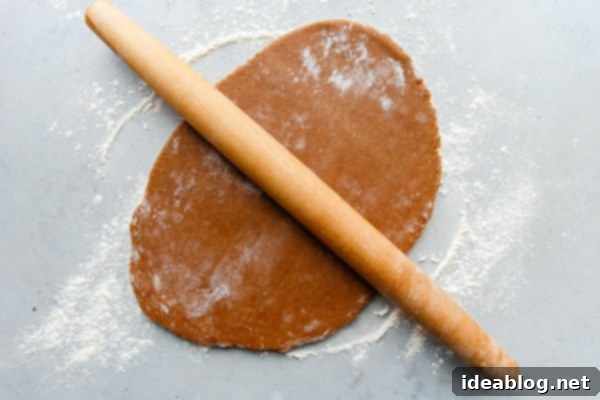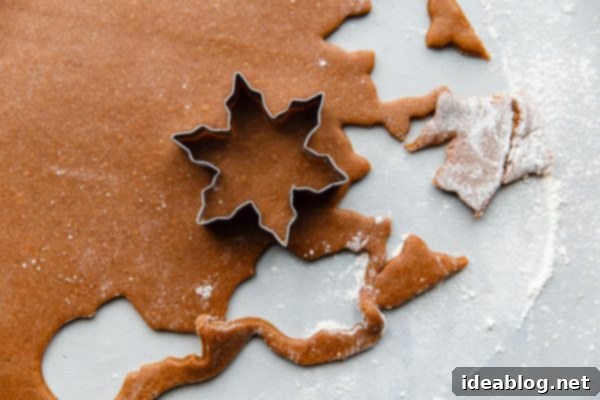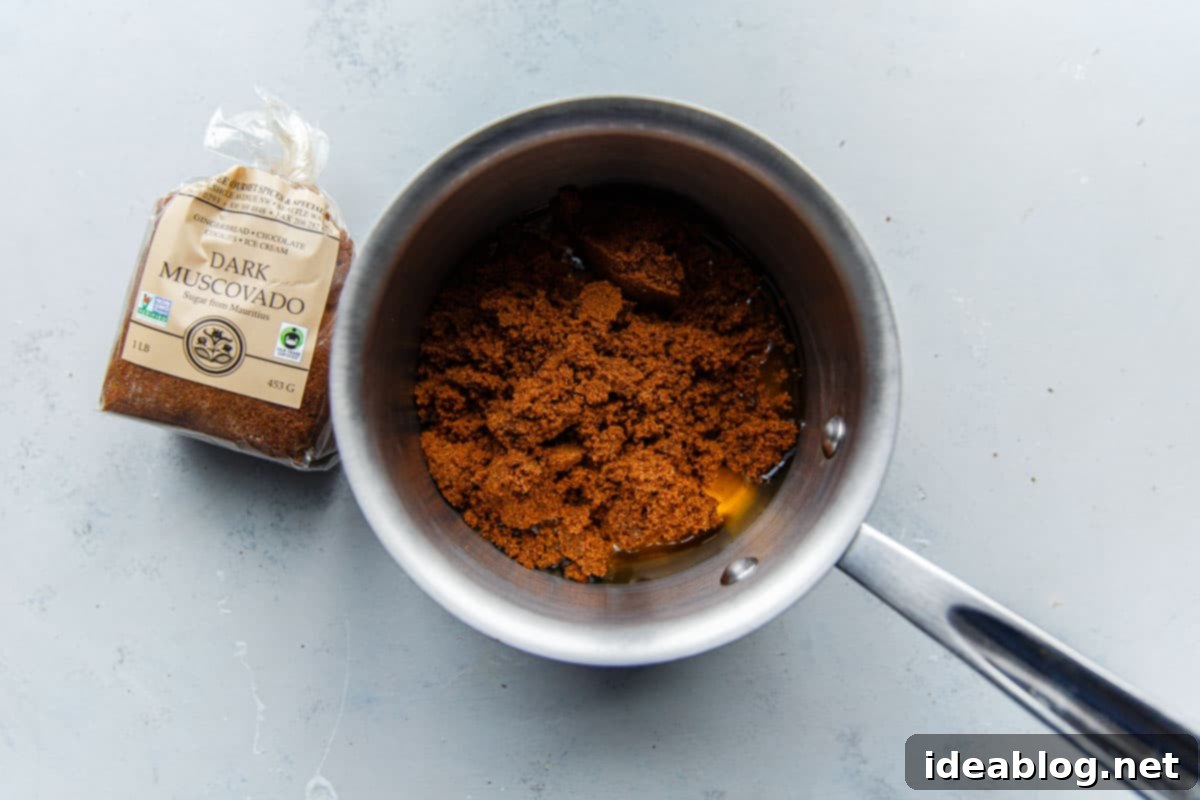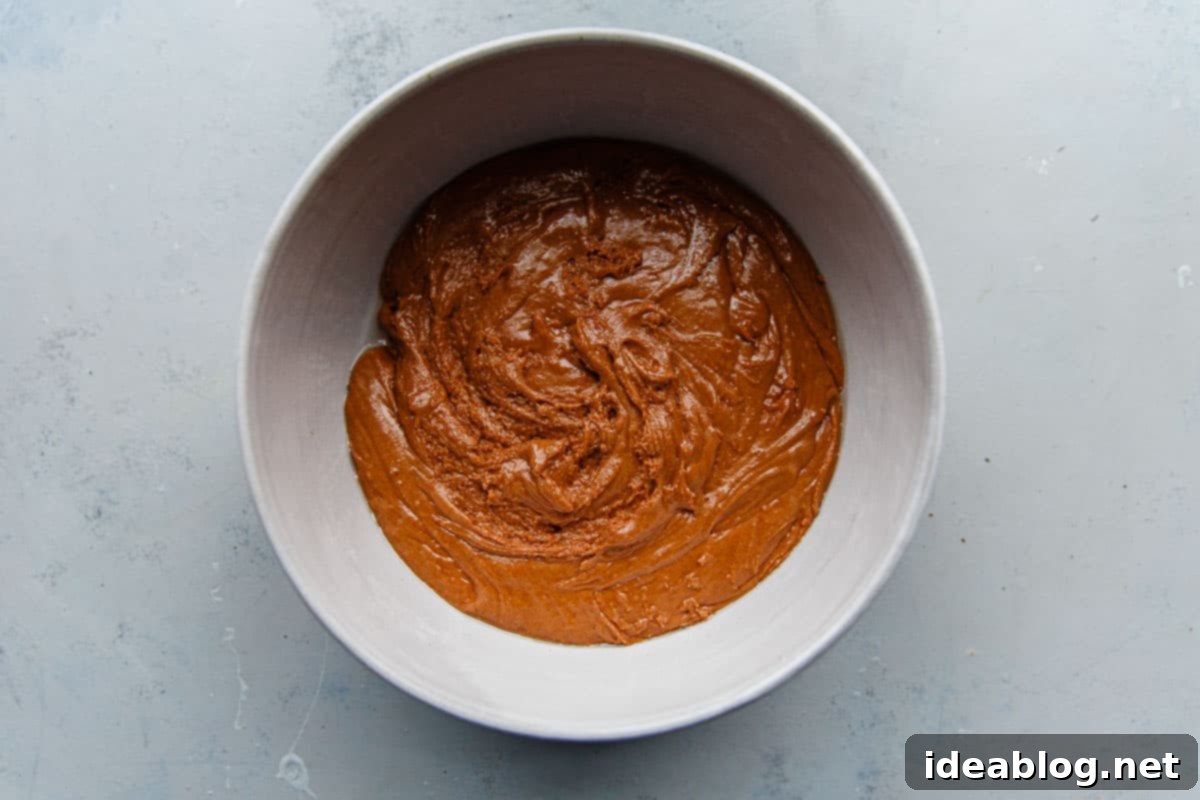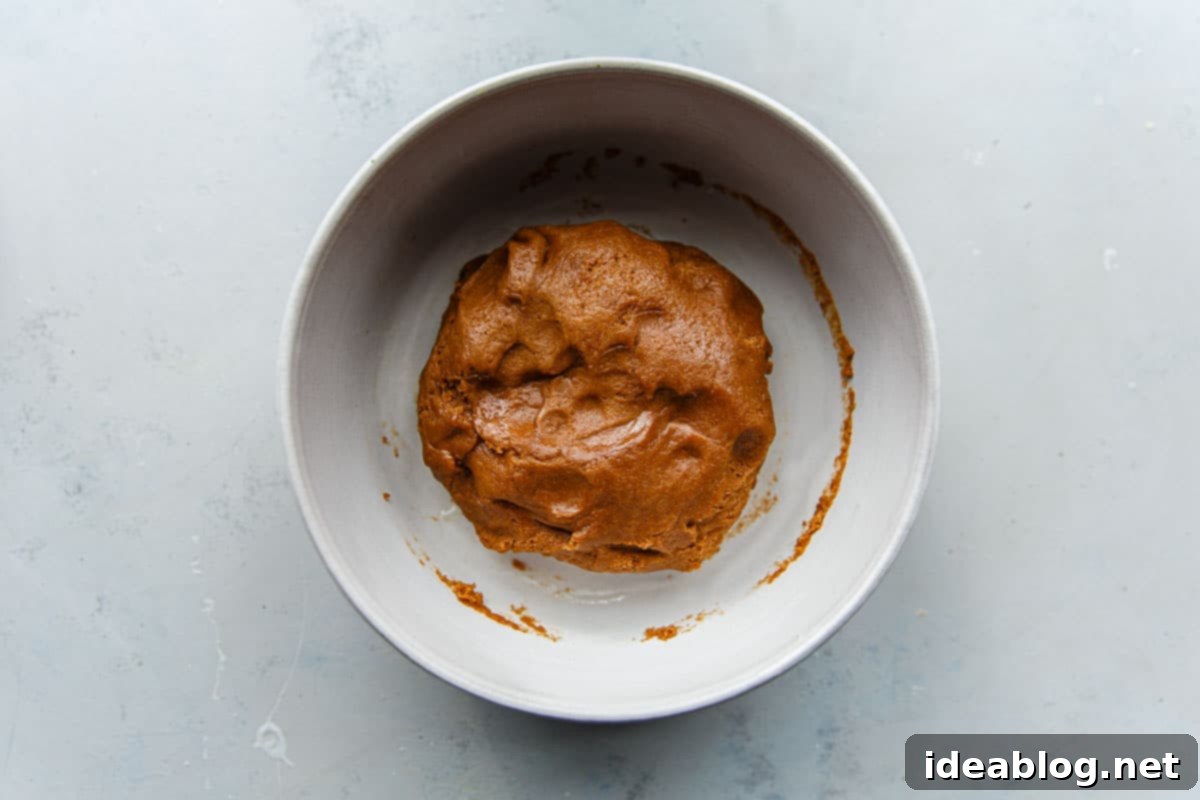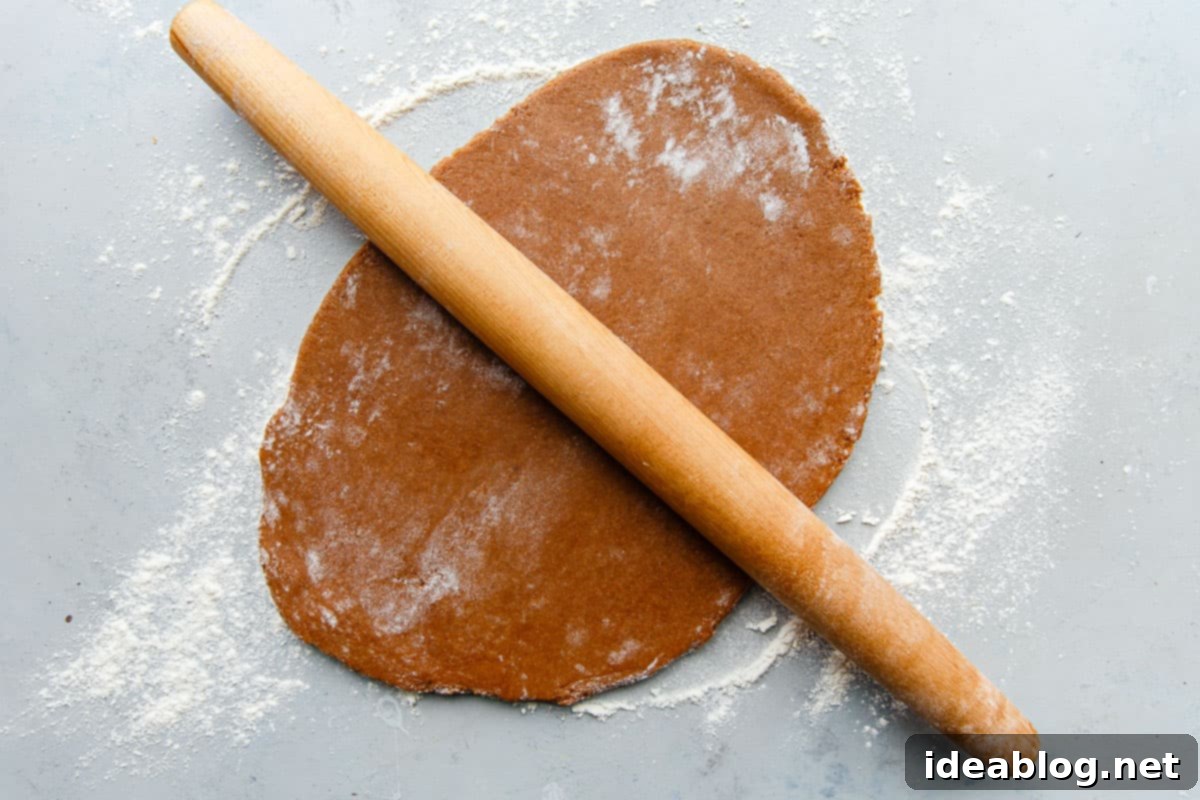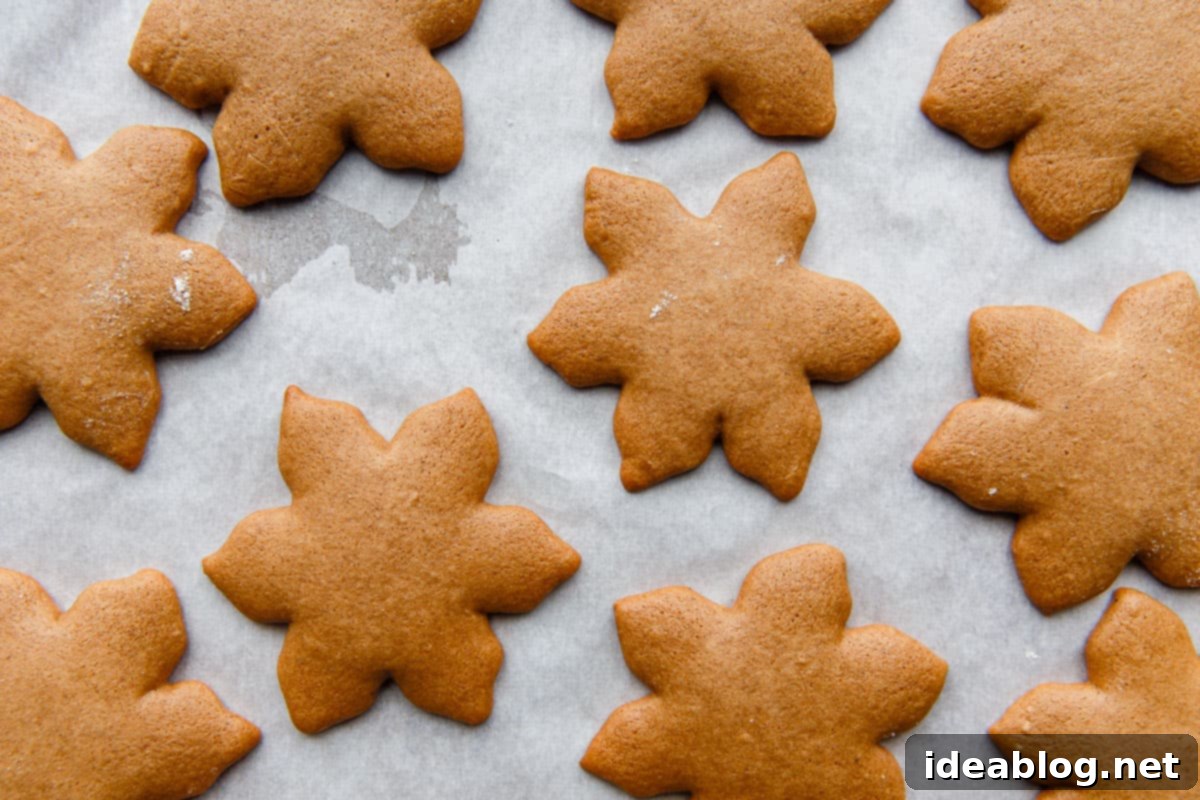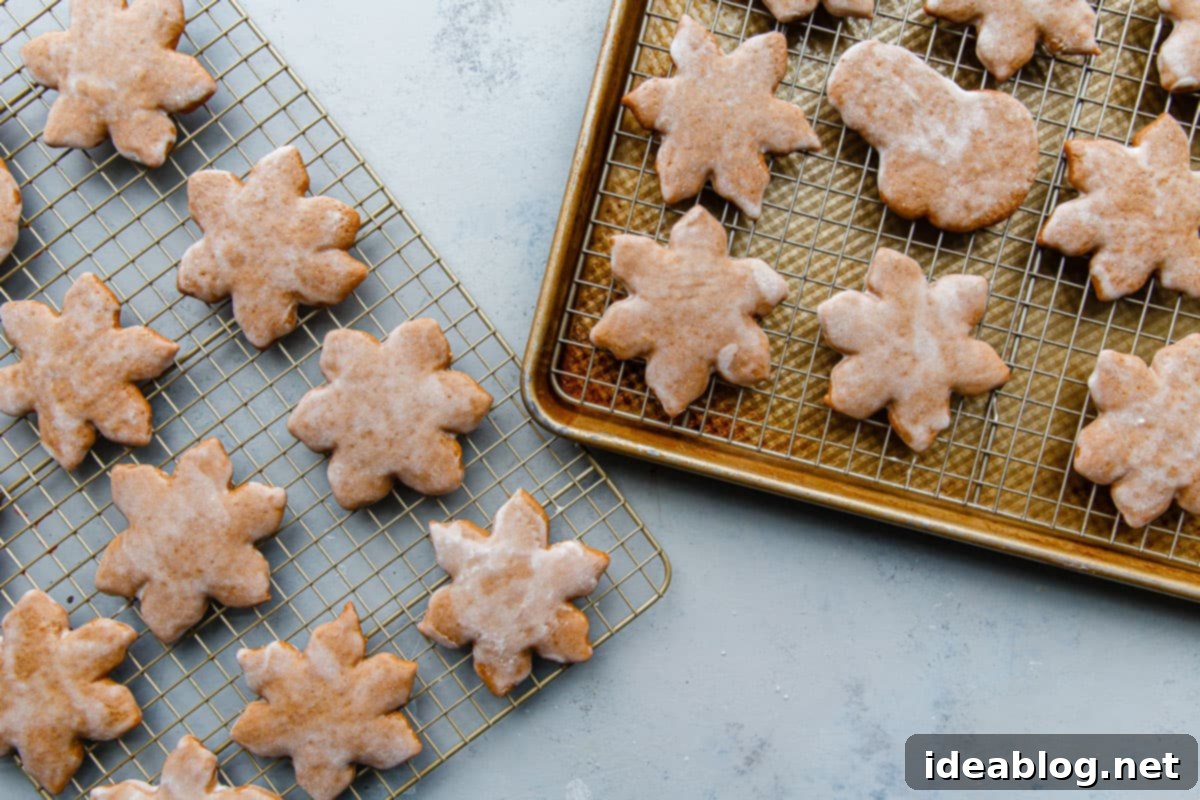Authentic German Lebkuchen Cookies: Your Guide to a Spiced Christmas Tradition
Delight in the festive flavors of the holiday season with traditional glazed German Lebkuchen cookies. These aromatic, spiced treats, steeped in history, offer a unique twist on classic gingerbread, promising a soft, chewy texture and an unforgettable taste experience perfect for sharing and savoring.
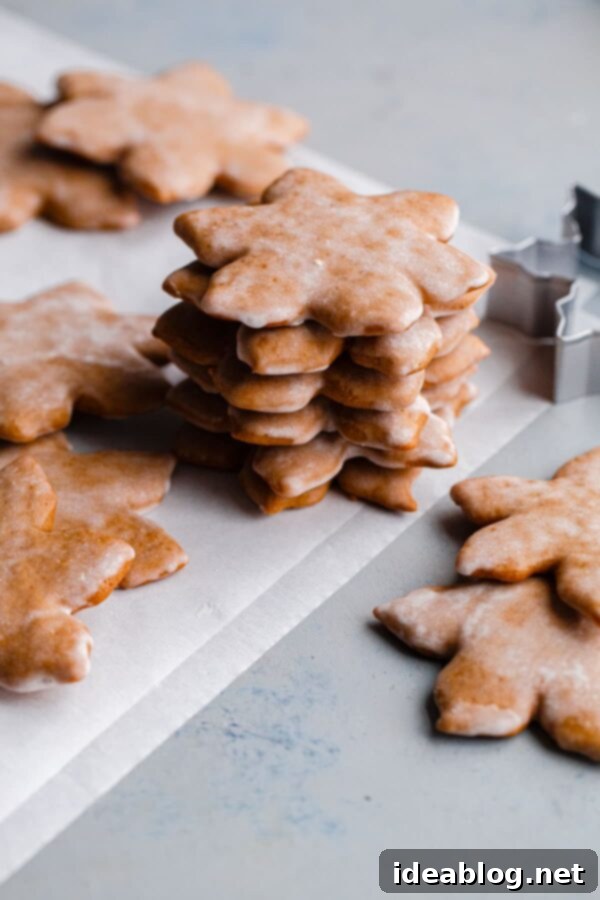
There’s something truly magical about the aroma of freshly baked goods filling your home during the holiday season. It evokes cherished memories and sets a joyful tone for festive gatherings. While my heart often yearns for the nostalgic sweetness of childhood favorites, like my grandmother’s almond sugar cookies or the comforting familiarity of my mom’s legendary fruit cake recipe, I find immense joy in embracing new traditions and expanding my holiday baking repertoire.
This year, my kitchen has been transformed by the enchanting scent of Lebkuchen cookies – a truly classic German Christmas delight. These intricately spiced, cut-out cookies are elegantly finished with a light glaze, resulting in a soft, wonderfully chewy texture that makes them an absolutely perfect treat for the chilly winter holidays. They offer a sophisticated and deeply flavorful alternative to more common holiday cookies, inviting you to discover a taste of European festive tradition right in your own home.
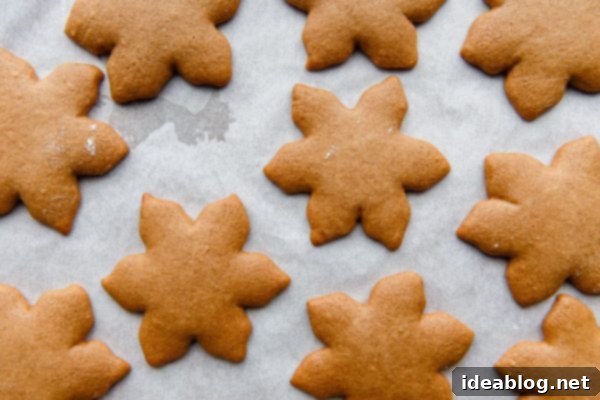
Discovering German Baking Through “Midwest Made: Big, Bold Baking from the Heartland”
This exceptional Lebkuchen recipe is sourced from Shauna Sever’s acclaimed cookbook, Midwest Made: Big, Bold Baking from the Heartland. This comprehensive collection, featuring over 125 recipes, beautifully blends timeless classics with heartwarming, comforting favorites. Shauna’s approach offers more than just recipes; it’s a captivating journey into the rich tapestry of American baking, highlighting the profound influence of European immigrants on the culinary traditions of the Midwest.
Her book provides an intimate glimpse into a Midwest kitchen, where generations of baking secrets are shared. Among these treasured recipes, it was her recipe for iced Lebkuchen that immediately caught my attention. The promise of an authentic, deeply spiced German Christmas cookie was simply irresistible, perfectly aligning with my desire to explore new holiday traditions and flavors.
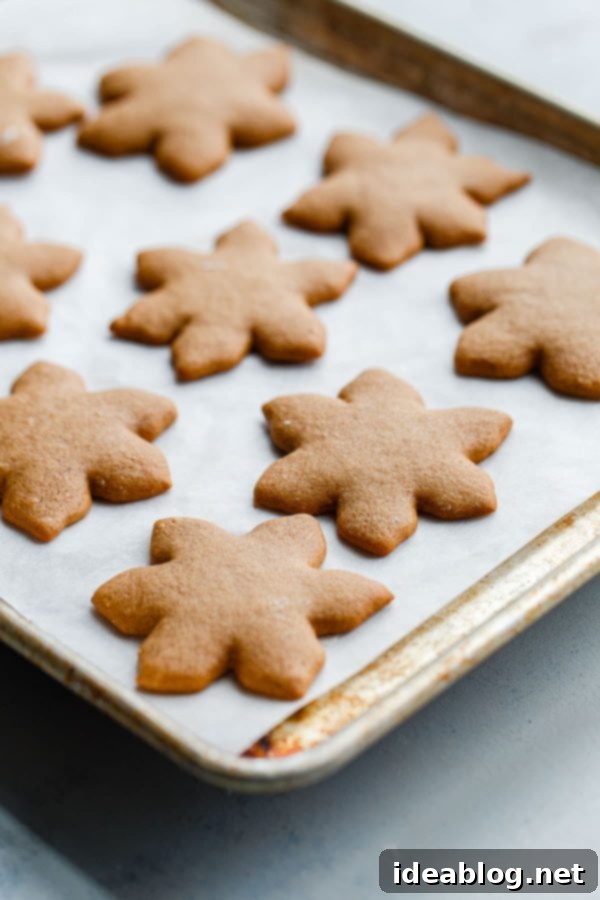
For those familiar with the festive atmosphere of the Midwest during the holiday season, you’ll know that traditional holiday markets begin to flourish everywhere. Here in Chicago, one of my absolute favorite annual activities is exploring the enchanting German-inspired Christkindlmarket. These vibrant markets are a sensory delight, filled with handcrafted gifts, warm spiced drinks, and, of course, an abundance of traditional German treats. Lebkuchen cookies are a staple at these markets, sold both as delicious edible delights and as beautiful, decorative ornaments, embodying the spirit of German Christmas.
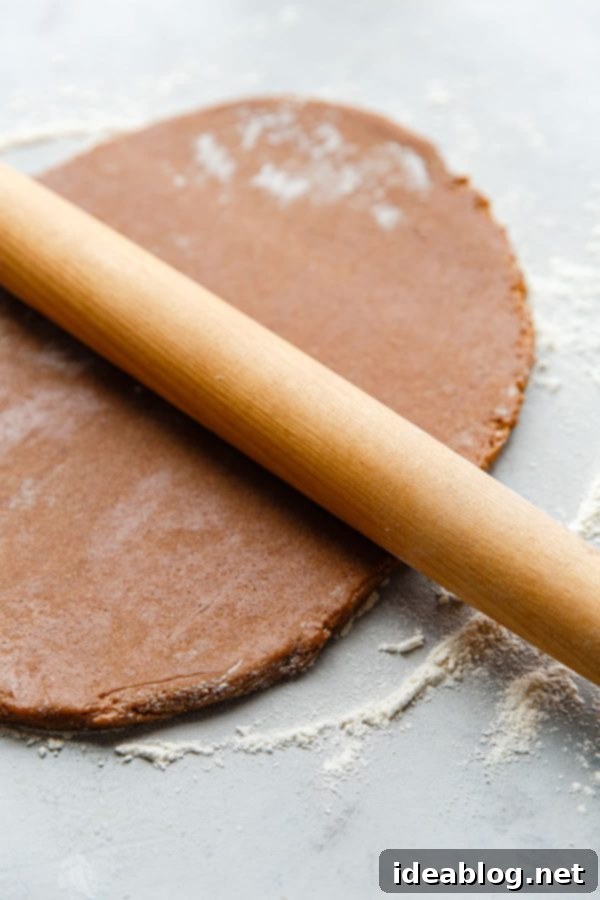
What Exactly Are Lebkuchen Cookies? A Dive into German Christmas Traditions
Lebkuchen cookies boast a rich and fascinating history, tracing their origins back to the German town of Nuremberg in the 14th century. These ancient treats are often considered a precursor to modern gingerbread, but with their own distinct characteristics and charm. To truly appreciate Lebkuchen, as Shauna Sever expertly explains, they require a bit of foresight and planning, making them a wonderful project for those who enjoy the art of slow baking.
The ideal baking process for Lebkuchen cookies begins at least a week, and sometimes even two, before you intend to serve or enjoy them. This extended timeline might initially seem daunting or overly fastidious, but I can wholeheartedly assure you that this preparation period is absolutely crucial. It makes an enormous difference to the final product, transforming a good cookie into an extraordinary one. The unique ripening process allows the flavors to deepen and meld, resulting in a depth of taste that truly sets these cookies apart.
In terms of flavor, Lebkuchen are indeed gingerbread-like, featuring a delightful blend of warm, aromatic spices. However, their texture is distinctly different: they are beautifully chewy and soft, a characteristic achieved through a special storage technique that we’ll explore in detail. Once baked to perfection, these lovely cookies are brushed with a simple yet bright lemon glaze, which adds a subtle tang and a beautiful sheen, complementing the rich spice profile beautifully.
Beyond their taste and texture, Lebkuchen also hold significant cultural value. They are not merely cookies; they are edible symbols of German Christmas tradition, often seen at Christkindlmarkets, hanging as ornaments, or exchanged as thoughtful gifts. Understanding their heritage truly elevates the experience of baking and enjoying these delightful treats.
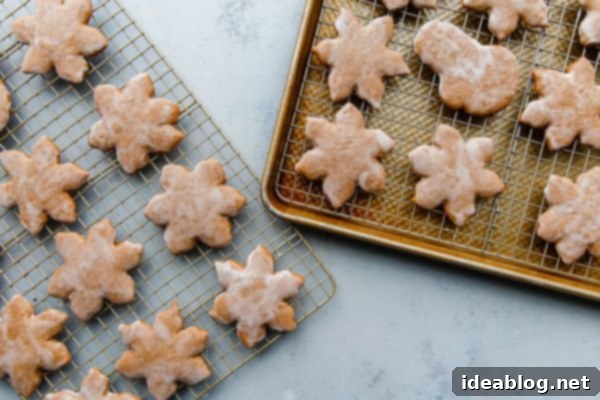
Essential Ingredient Notes for Perfect Lebkuchen
Crafting authentic Lebkuchen cookies is surprisingly straightforward, with their remarkable flavor primarily deriving from a thoughtful selection of warming spices and specific sweeteners. One key ingredient that Shauna Sever highlights for achieving that authentic taste is dark muscovado sugar. This unrefined cane sugar is celebrated for its high molasses content, which imparts a deeper, richer, and more complex flavor profile compared to standard dark brown sugar. It also contributes significantly to the cookies’ characteristic moistness and chewiness.
While dark muscovado sugar can be found in most natural food stores or well-stocked supermarkets, it’s understandable if it’s not readily available. Should you find yourself without it, don’t fret! You can absolutely substitute it with an equal amount of good quality dark brown sugar. While the flavor might be slightly less intense, your Lebkuchen will still be wonderfully delicious and maintain their essential qualities. The combination of honey and a robust sugar forms the sweet backbone, while the distinctive spice blend is what truly defines Lebkuchen. Cinnamon, allspice, nutmeg, ginger, and cloves create a symphony of flavors that is both comforting and exhilarating, perfectly suited for the festive season.
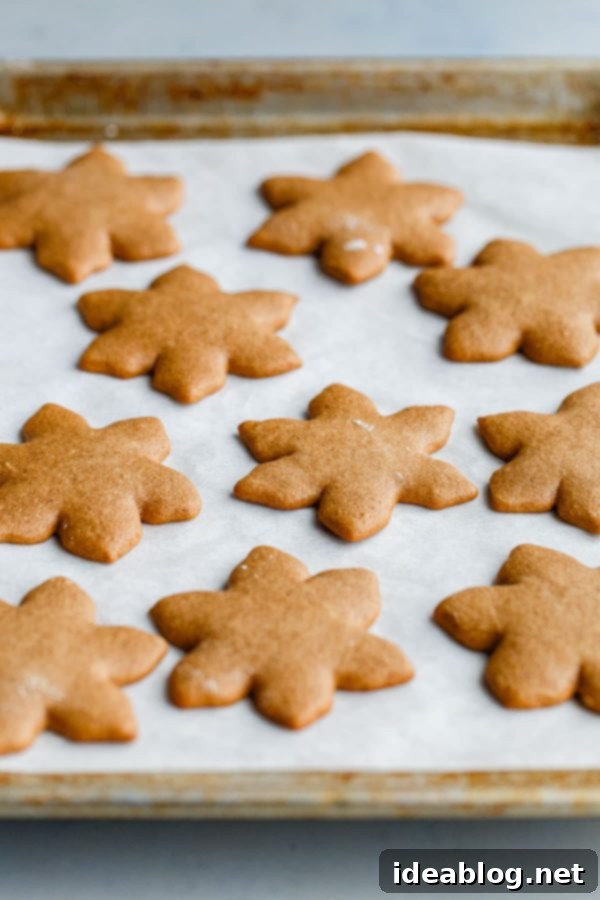
Step-by-Step Guide: How to Make Authentic Lebkuchen Cookies
The process of making Lebkuchen is unique and rewarding, distinguishing it from typical cookie recipes. The secret to their incredible flavor and signature soft, chewy texture lies not just in the ingredients, but in the crucial “ripening” period where the dough rests at room temperature for a day or two. This extended rest allows the flavors to deepen and the dough to develop its characteristic consistency.
- Prepare the Dough in Advance: Begin by combining the clover honey and dark muscovado sugar (or dark brown sugar) in a 1½-quart saucepan. Place the saucepan over medium-high heat and stir gently but continuously until the sugar is fully dissolved and the mixture just begins to simmer. This ensures a smooth, integrated base for your cookie dough. Once simmering, remove the pan from the heat immediately and stir in the unsalted butter until it has completely melted and incorporated. Allow this mixture to cool down until it’s just warm to the touch – it should not be hot, as this could cook the egg. Once cooled sufficiently, whisk in the beaten large egg, along with the finely grated lemon zest and freshly squeezed lemon juice. These acidic components add a bright contrast to the rich sweetness and spices.
2. In the bowl of a stand mixer, fitted with a paddle attachment, combine all the dry ingredients: unbleached all-purpose flour, baking soda, fine sea salt, ground cinnamon, ground allspice, freshly grated nutmeg, ground ginger, and ground cloves. Mix these thoroughly to ensure an even distribution of the spices. With the mixer set to a low speed, gradually add the cooled wet ingredients into the dry mixture. Continue to mix until a smooth, very sticky, and somewhat slack dough forms. Don’t be alarmed if the dough appears too thin or loose at this stage; this consistency is expected. It will firm up considerably as it rests and the flavors develop. Scrape down the sides of the bowl to ensure everything is well combined.
3. Rest the Dough for Flavor Development: This step is paramount to the authentic Lebkuchen experience. Transfer the sticky dough into a lightly oiled ceramic bowl. Cover the bowl loosely with a plate or a clean kitchen towel – you want the dough to be able to “breathe” slightly, rather than being sealed airtight. Allow the dough to rest and “ripen” at a cool room temperature for 1 to 2 days. It is crucial *not* to refrigerate the dough during this period. Shauna explains that the significant amounts of honey and sugar in the dough act as natural preservatives, preventing bacterial growth. As the dough rests, it will visibly thicken and, more importantly, its flavors will deepen and meld, developing that complex, aromatic profile characteristic of traditional Lebkuchen.
4. Once the dough has ripened, turn it out onto a generously floured work surface. The dough will still be soft, so don’t hesitate to use ample flour to prevent sticking, both on your surface and your rolling pin. Roll out the dough to an even ¼-inch (6mm) thickness. Use a bench scraper or a thin spatula to periodically get underneath the dough and gently move it around in the flour, ensuring it doesn’t adhere to the surface. Cut the dough into your favorite holiday shapes using cookie cutters. Laura’s Baking Note: For Lebkuchen, it’s best to opt for simpler cookie cutter designs. Intricate details tend to expand and become less defined during the baking process due to the dough’s soft nature and honey content. Classic circles, stars, or simple heart shapes work beautifully.
5. Carefully transfer the cut-out cookies to baking sheets lined with parchment paper, leaving about 1 inch (2½ cm) between each cookie. Bake them in a preheated oven at 350°F (180°C) until they are fragrant and lightly browned around the edges, typically about 12 minutes. Be sure to rotate and flip the pans halfway through the baking time to ensure even baking. Keep a close eye on them, as the honey in the batter can cause the edges to brown much quicker than other types of cookie dough.
6. Prepare and Apply the Glaze: While the cookies are baking or immediately after they come out of the oven, prepare the simple lemon glaze. In a medium bowl, whisk together confectioner’s sugar, a large egg white, fresh lemon juice, and a pinch of fine sea salt until it forms a smooth, thin, and slightly runny consistency. Add a few extra drops of lemon juice if needed to achieve the desired thinness. Once the cookies have cooled on the baking sheets for about 5 minutes to firm up slightly, gently brush them with this bright lemon glaze while they are still warm. The warmth helps the glaze adhere and set beautifully. Transfer the glazed cookies to a wire rack to cool completely and allow the glaze to fully dry and harden. This usually takes a few hours.
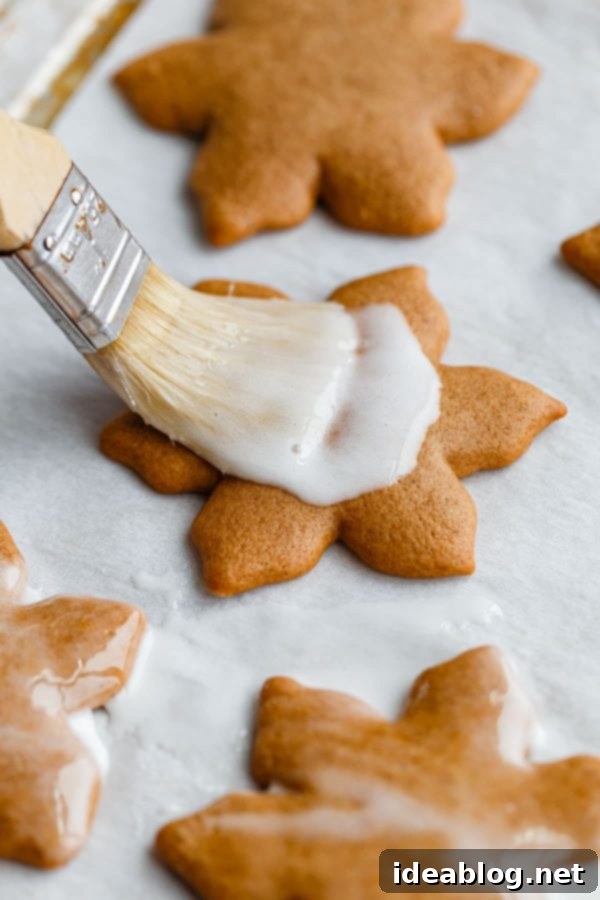
7. The Crucial Softening Step: This next step is absolutely key to achieving the signature soft and chewy texture of traditional Lebkuchen. Once the cookies are completely cool and the glaze is dry, arrange them in an airtight container. Layer the cookies, separating each layer with sheets of parchment or wax paper to prevent sticking. Crucially, tuck a wedge of fresh apple (a quarter or half an apple works well) into the container before securely sealing it. Store the container in a cool, dry place – not the refrigerator – for at least 3 days, or ideally, up to two weeks. This period allows the cookies to “ripen” and soften further. The moisture from the apple creates a humid environment within the container, which the cookies absorb, transforming them into their wonderfully tender, chewy state. This patience is truly rewarded with an unparalleled texture.
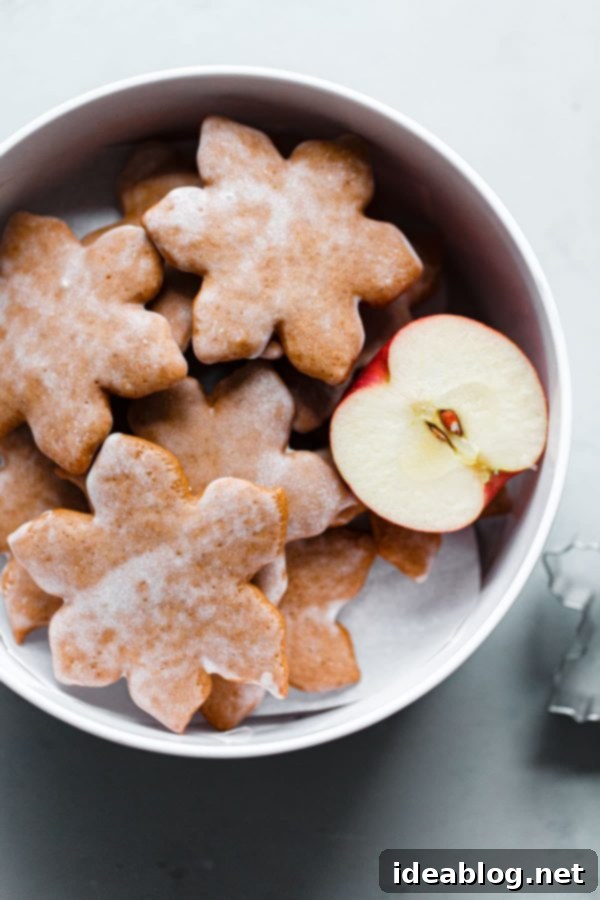
Lebkuchen: Essential Tips for Unrivaled Success
Mastering traditional Lebkuchen comes down to understanding and respecting two critical resting phases, both of which are fundamental to developing their unique flavor and desirable soft texture. Ignoring these steps will result in a cookie that, while still spiced, won’t truly embody the authentic Lebkuchen experience.
The first “secret” is the initial dough resting period, typically 1 to 2 days at room temperature. As explained in the instructions, this allows the honey and spices to meld and deepen, creating a more complex and mature flavor profile. It also helps the dough firm up slightly, making it easier to handle and roll.
The second and equally vital secret unfolds *after* the cookies are baked and glazed: storing them with a fresh apple wedge. This simple yet ingenious trick is what imparts that perfectly soft and wonderfully chewy texture that defines authentic Lebkuchen. The moisture naturally released by the apple provides a gentle humidity within the airtight container, which the cookies gradually absorb. This process rehydrates the cookies, preventing them from becoming dry or hard, and instead transforms them into tender, melt-in-your-mouth delights. Furthermore, the apple can impart a subtle, fresh undertone that complements the spices beautifully. It’s crucial to check on the apple periodically; if it shrivels or the cookies begin to feel too hard or stale, simply replace it with a fresh apple piece to maintain optimal moisture levels. This post-baking resting period is non-negotiable for achieving the truly authentic Lebkuchen experience.
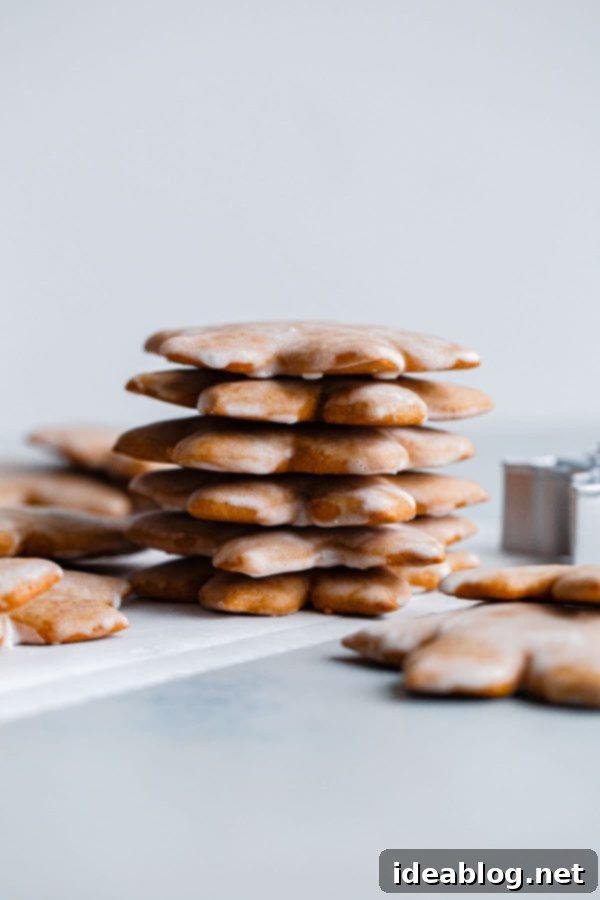
Perhaps one of the most appealing aspects of these particular German Christmas cookies is their exceptional keeping quality. Thanks to their unique ingredients and the careful ripening and softening process, Lebkuchen are designed to be made well in advance. This characteristic makes them an ideal choice for busy holiday bakers, allowing you to prepare a batch weeks before your celebrations. You can enjoy them throughout the entire festive season, assuming, of course, they last that long without being devoured!
My absolute favorite way to indulge in these spiced treasures is paired with a steaming cup of tea or a robust coffee. The subtle warmth of the beverage perfectly highlights the intricate spice blend of the cookies, making each bite a moment of pure holiday bliss. They’re incredibly easy to snack on and are sure to become a beloved new tradition in your home.
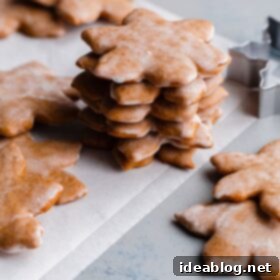
Lebkuchen Cookies
Pin
Review
SaveSaved!
Equipment
-
Half Sheet Pan
-
Natural Parchment Paper
Ingredients
Cookies:
- ¾ cup (250 g) clover honey
- ¾ cup (170 g) dark muscovado (or organic dark brown sugar)
- 4 tablespoons (57 g) unsalted butter cut into chunks
- 1 large egg beaten
- 2 teaspoons finely grated lemon zest
- 1 tablespoon freshly squeezed lemon juice
- 3 cups (384 g) unbleached all-purpose flour fluffed, spooned, and leveled, plus more for dusting
- ¾ teaspoon baking soda
- ½ teaspoon fine sea salt
- 2 teaspoons ground cinnamon
- ½ teaspoon ground allspice
- ½ teaspoon freshly grated nutmeg
- ¼ teaspoon ground ginger
- ¼ teaspoon ground cloves
- oil for the bowl
Glaze:
- 1 cup (120 g) confectioner’s sugar sifted
- 1 large egg white
- 1 tablespoon freshly squeezed lemon juice
- ⅛ teaspoon fine sea salt
Instructions
-
Prepare the Cookies: In a 1½ quart saucepan, combine the honey and muscovado sugar. Over medium-high heat, stir gently until the sugar begins to dissolve and the mixture just begins to come to a simmer. Remove the pan from the heat and stir in the butter. Cool until warm to touch. Whisk in the egg and lemon zest and juice.

-
In the bowl of a stand mixer fitted with a paddle attachment, stir together the flour, baking soda, salt, and spices.
-
On low speed, stir in the wet ingredients until a smooth, sticky dough forms. Laura’s Note: This will be slack and loose, don’t worry! Scrape the dough into a lightly oiled ceramic bowl and cover with a plate – you want the dough to be able to breathe.

-
Allow the dough to “ripen” at cool room temperature for 1 to 2 days – do not refrigerate. (The large amount of honey and sugar will keep bacteria at bay.)

-
Position racks to the upper and lower thirds of the oven and preheat it to 350°F (180°C). Line two baking sheets with parchment paper.
-
Turn out the dough onto a well-floured work surface. Roll it out to a ¼-inch/6 mm thickness. Use a bench scraper or thin spatula to get under the dough and scoot it around in the flour occasionaly to prevent sticking. Cut shapes with 2-inch/5 cm cutters and place 1 inch/2½ cm apart on the prepared baking sheets. Sweep away any excess flour with a pastry brush.

-
Bake until fragrant and lightly browned, about 12 minutes, rotating the baking sheets from top to bottom and front to back halfway through the baking time. (Watch closely, as honey in the dough can make the edges catch and burn quickly.)

-
Prepare the Glaze: In a medium bowl, whisk together the confectioner’s sugar, egg white, lemon juice, and salt for a smooth, thin, runny glaze. (Add a few drops of lemon juice, as needed, to achieve this consistency).
-
Let the cookies firm up and cool on the baking sheets for 5 minutes. Run an offset spatula under the cookies to gently looesn them from the parchment paper, leaving them on the sheets.
-
While still warm, brush the cookies with glaze and transfer to wire racks. Allow the cookies to cool and the glaze to dry completely.

-
The secret to a perfect lebkuchen texture is in the resting phase: place the cookies into airtight containers in layers, seperated by parchment or wax paper. Tuck a wedge of apple in the container before sealing. Store in a cool place for at least 3 days, or up to 2 weeks, to allow the cookies to ripen once more before serving.
Tips for Success:
- The secret to a perfect Lebkuchen texture is in the resting phase: after baking, place the cookies into airtight containers in layers, separated by parchment or wax paper. Tuck a wedge of fresh apple in the container before sealing. Store in a cool, dry place for at least 3 days, or up to 2 weeks, to allow the cookies to ripen and soften once more before serving. Remember to replace the apple wedge if it dries out to maintain optimal moisture.
Recipe reprinted with permission from Midwest Made: Big Bold Baking From the Heartland by Shauna Sever (Running Press 2019).
